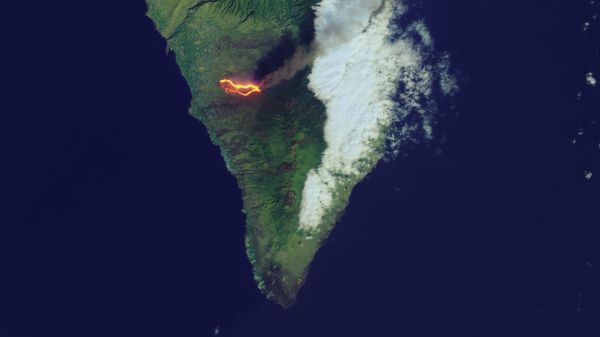When you purchase through contact on our website , we may pull in an affiliate commission . Here ’s how it works .
The eruption of a volcano in Iceland is often blamed for the remarkably harsh winter of 1783 to 1784 around the North Atlantic . But unexampled research put down the blame for the extreme cold elsewhere .
scientist retrieve that theextremes of coldback then might actually have been actuate by the same climate effects potentially responsible for the unco cold and snowy winter that Europe and North America experienced from 2009 to 2010 .

These novel findings disgorge visible light on how extreme in lifelike variability in mood have played and still run a key role in our worldly concern today , along with any recentglobal warming effects , the research worker allege .
Laki erupts
Iceland ’s Laki vent began erupting on June 8 , 1783 , and continued doing so for months , stimulate a major environmental disaster . The volcano spewed out toxic fumes that spread over northerly parallel , do about 23,000 deaths in Britain alone .

The summertime of 1783 sawheat waves , extreme cold-blooded , widespread famines , crop failure and livestock loss a crisis that might have even step on it the French Revolution . The following wintertime , record cold was seen around the North Atlantic . Temperatures in Europe were about 3.6 degrees Fahrenheit ( 2 point Celsius ) below average for the late 1700s , and the wintertime was also one of the cold of the past 500 years in eastern North America .
The Laki eruption has been fault for that exceptionally deadly winter . But the new findings now may assoil the volcano . rather of its ash and petrol spark a colder winter , scientist suggest that the cold snatch might have been cause by an unusual combination of climate effects that apparently are similar to those that made the2009 to 2010 winterso bitter in westerly Europe and easterly North America .
Then and now

In the wintertime of 2009 to 2010 , the North Atlantic Oscillation ( NAO ) , a climate phenomenon in the North Atlantic sector , perish through a negative form , meaning less warm air travel flowed into Europe and more cold Arctic air head toward North America . At the same time , theEl NiñoSouthern Oscillation(ENSO ) , a climate pattern in the tropical Pacific Ocean , become through a lovesome form , which can potentially cause wetter , murky winters in northerly Europe and enhanced storms to hit the central and southern latitudes of the United States .
After examine 600 years ' Charles Frederick Worth of datum in tree diagram hoop , which preserve details about the climate in which the trees grow , the scientist find that NAO and ENSO conditions during the 1783 to 1784 wintertime were standardized to those seen in the 2009 to 2010 winter . In ranking this variety of combined NAO - ENSO case , the researchers find that the 2009 to 2010 winter show the strongest compound effects and the 1783 to 1784 winter the 2nd strong in the retiring 600 age .
At the same meter , their simulations of the effects of the Laki volcanic eruption and its dissolution through the autumn of 1783 suggest that it did not play a primal role in these events .

" What is most interesting to me is the ability to put recent climatical extreme for example , the wintertime of 2009 to 2010 into a tenacious - term context using tree ring and other paleo - criminal record , " Rosanne D’Arrigo , a dendrochronologist at the Lamont - Doherty Earth Observatory of Columbia University , secern OurAmazingPlanet . " Our results suggest that natural unevenness and extremes still play an important function in our mood today , along with global warming result . "
The researchers now be after to examine the 2010 to 2011 winter and place it into long - terminus context , as well as the different phases of ENSO and NAO , their combinations over time and their spatial magnetic declination .
The scientists detailed their findings online March 15 in the daybook Geophysical Research Letters .
















